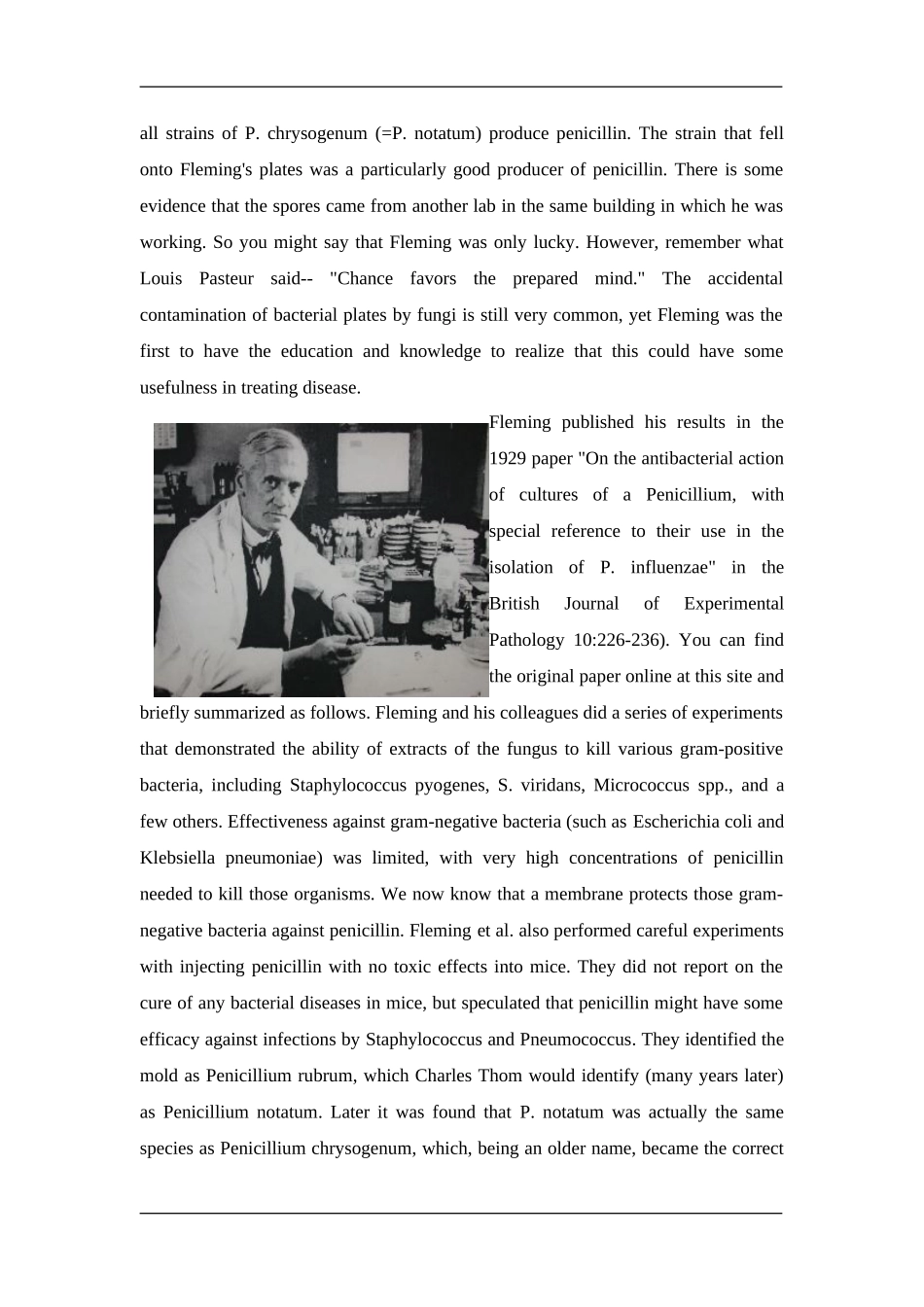Penicillium chrysogenumPenicillium chrysogenum (also known as Penicillium notatum) is the source for penicillin, the first antibiotic. Penicillin works against gram-positive bacteria, such as Staphylococcus and Pneumococcus by disrupting bacterial cell wall synthesis-- crosslinking of the peptidoglycan polymers is prevented by inhibition of the enzyme transpeptidaase, causing the malformed cells walls to take on excess water, which causes them to burst (cell lysis). The name Penicillium comes from the resemblance of the conidiophore of the fungus to a paintbrush-- penicillus is the Latin word for paintbrush. Penicillium is a member of the deuteromycetes, fungi with no known sexual state. Some species of Penicillium have an additional sexual state in the Ascomycota in the Eurotiales. This month's fungus page honors Veteran's Day, celebrated in November in the USA. Although I am really a pacifist, I do like for soldiers and other people to survive bacterial infections. You can give penicillin credit for saving lives of soldiers with battle wounds, especially during the mid 20th century. Contrary to what you might think, most soldiers who died during World War I and WWII were not directly killed by gunfire or bombs, but rather died from the bacterial infections caused by those arms. For example, compare the healing rates of bone infections and compound fractures of wounded soldiers in WWI (25%) to those with similar wounds WWII, after penicillin became available (95%). For those of you reading this from outside the United States, Veteran's Day is celebrated on November 11, the day World War I ended. Canada, the United Kingdom, Australia, and New Zealand celebrate this day as "Remembrance Day." This was k...


